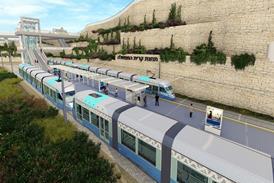Close menu
- Home
- News
- In depth
- Events
- Data
- Maps
- Tenders & Jobs
- Sponsored content
- Insights
Pantographs pushed for higher speed
By Railway Gazette International2008-03-25T05:01:00
DEUTSCHE BAHN and Stemmann-Technik are collaborating on a project to develop an actively-controlled single-arm pantograph capable of operation at up to 400 km/h.
Already have an account? LOG IN
To continue…
You’ve reached your limit of content for the month
Get enhanced access to Railway Gazette news and weekly newsletters.
Site powered by Webvision Cloud














